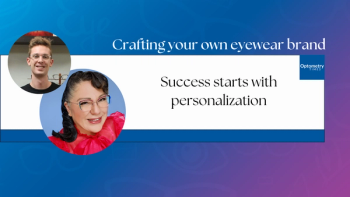
Tips for Web site makeovers
Walt Mayo, OD, offers proven tips for enhancing practice Web sites to increase traffic online and through the front door.
Everybody knows a bad Web site when they see it, shared Walt Mayo, OD, during a special session, “Celebrating Technology,” at the 90th annual SECO International meeting in Atlanta. “First impressions are everything,” he said.
Dr. Mayo, in practice in Myrtle Beach, SC, founded the long-running online optometric community OptCom and serves as technology consultant for SECO.
The worst things on Web sites are canned images and amateur photography. “The best and easiest way to improve a site is to use professional photography of the doctor and staff,” he said.
Identify bad Web sites with:
• Bad color schemes
• Poor copy
• Busy design
• Width too narrow or wide
• Mixed fonts
• Bad navigation
• Improper or excessive animation
• Use of Flash (long unavailable on iPhone and iPad, now not visible on Android devices)
What makes a great Web site:
• Start with a great logo (Dr. Mayo suggested 99designs, a site which allows you to host a contest for designers to compete for your winning design; http://99designs.com
• Clean appearance
• Responsive design, which tailors the site to the type of device used to view it
• Consistent fonts
• Professional-quality photographs
• Little to no stock photographs
• Constant infusion of content
• Tightly integrated with social media
• Adequate security
• Easily upgradable
• Easily managed by you
• Proper SEO implementation
• Integrated support for mobile
Dr. Mayo recommended working with optometric Web site providers. Such providers understand the needs of optometrists, don’t need to start from scratch, and are familiar with third-party add-ons and content providers such as Eyemaginations, Demandforce, 4PatientCare, and
He also suggested not developing an app for your practice or your practice’s Web site. “There are too many mobile OS’s now,” he said.
Newsletter
Want more insights like this? Subscribe to Optometry Times and get clinical pearls and practice tips delivered straight to your inbox.
















































.png)


